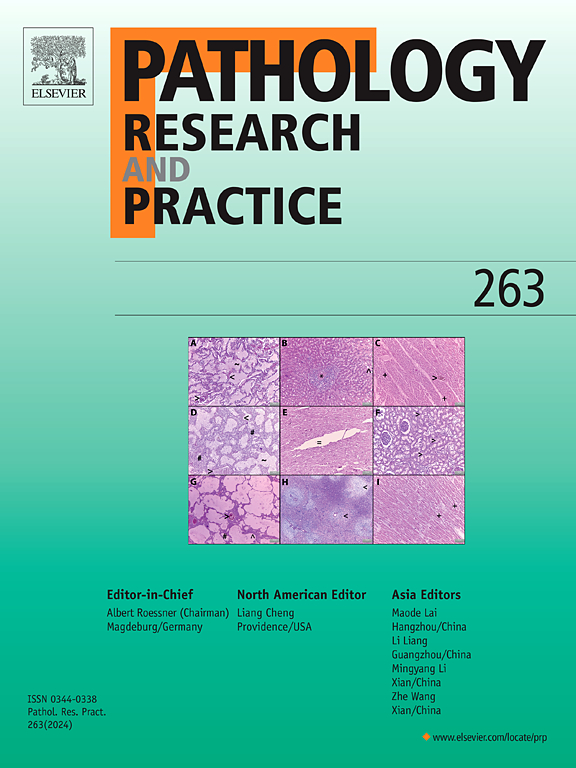利用植物化学物质及其纳米制剂靶向肺部肿瘤微环境
IF 2.9
4区 医学
Q2 PATHOLOGY
引用次数: 0
摘要
肺部恶性肿瘤是最常见和最主要的肿瘤相关死亡原因之一。尽管对肺癌的认识和治疗取得了重大进展,但对传统治疗方法的耐药性仍然是一项重大挑战。近十年来,对肿瘤微环境(TME)的了解和靶向治疗引起了人们对消除各种实体瘤的兴趣。肺部肿瘤微环境在肿瘤扩张和治疗失败中占据重要地位,因此成为新型药物干预的目标。植物提取物具有多样的化学结构和生物活性,为靶向 TME 提供了一条前景广阔的途径。然而,生物利用度不足以及可能的全身毒性阻碍了它们的临床应用。使用纳米颗粒作为天然产品的递送载体可以克服这些挑战并提高其疗效。这篇综述文章探讨了植物提取物作为靶向肺TME的药剂的潜力。我们概述了目前对肺TME的认识,并解释了植物提取物调节这一微环境关键成分的机制。此外,我们还将讨论将这些衍生物输送到肺部肿瘤的纳米颗粒的前景和特性。我们还将回顾临床前和临床研究结果,以支持这些制剂在靶向肺TME方面的有用性。此外,我们还强调了将植物衍生产品作为肺癌靶向疗法开发所面临的挑战和即将出现的趋势,并特别关注联合疗法。本文章由计算机程序翻译,如有差异,请以英文原文为准。
Targeting the lung tumor microenvironment by phytochemicals and their nanoformulations
Lung malignancies are among the most prevalent and foremost causes of tumor-related deaths. Despite significant advancements in the understanding and management of lung cancer, resistance to traditional treatments remains a significant challenge. Understanding and targeting tumor microenvironment (TME) have attracted interest in the recent decade for eliminating various solid tumors. The lung TME has a crucial position in tumor expansion and therapy failure, driving it an engaging target for novel medicinal interventions. Plant-derived products offer a promising avenue for targeting TME due to their diverse chemical structures and biological activities. However, their clinical use is hindered by insufficient bioavailability and also possible systemic toxicity. The use of nanoparticles as delivery vehicles for natural products can overcome these challenges and enhance their therapeutic efficacy. This review article explores the potential of plant-derived products as medicinal agents for targeting lung TME. We provide an outline of the present knowledge of lung TME and explain the mechanisms by which plant-derived products can modulate key components of this microenvironment. The promising impacts and properties of nanoparticles for the delivery of these derivatives into lung tumors will also be discussed. We also review the preclinical and clinical findings for supporting the usefulness of these agents in targeting lung TME. Additionally, we highlight the challenges and forthcoming trends in the development of plant-derived products as targeted therapies for lung cancer, with a particular focus on combination therapies.
求助全文
通过发布文献求助,成功后即可免费获取论文全文。
去求助
来源期刊
CiteScore
5.00
自引率
3.60%
发文量
405
审稿时长
24 days
期刊介绍:
Pathology, Research and Practice provides accessible coverage of the most recent developments across the entire field of pathology: Reviews focus on recent progress in pathology, while Comments look at interesting current problems and at hypotheses for future developments in pathology. Original Papers present novel findings on all aspects of general, anatomic and molecular pathology. Rapid Communications inform readers on preliminary findings that may be relevant for further studies and need to be communicated quickly. Teaching Cases look at new aspects or special diagnostic problems of diseases and at case reports relevant for the pathologist''s practice.

 求助内容:
求助内容: 应助结果提醒方式:
应助结果提醒方式:


